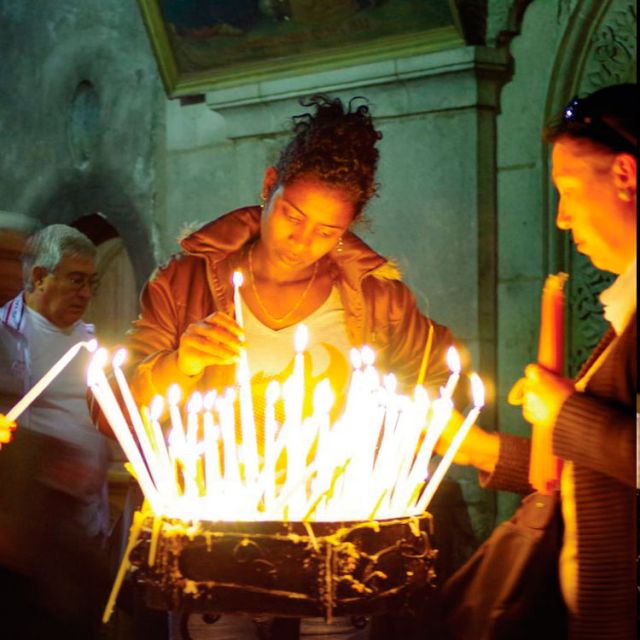But they must be prepared, physically and spiritually. There is a lot of walking, crowds, information overload and at times an overwhelming sense of history. “Being there” brings to life the reality of the faith we hold so dear. Visiting the Holy Land is an emotional experience.
What strikes many visitors is how a brief description in the Bible covers a lot of geographical territory. In the Nativity record, for example, when St. Luke writes, “And Joseph also went up from Galilee, from the city of Nazareth, to Judea, to the city of David, which is called Bethlehem,” he means “up” literally. The Sea of Galilee is some 200 metres below sea level, Nazareth about 220 metres above sea level and Bethlehem, in the Judean Hills is about 775 metres above sea level.
The distance between Nazareth and Bethlehem is about 160 km. A tour bus covers it with ease along modern highways. In ancient times most people travelled these routes on foot either through farmland or desert, depending on the route. When you consider that when Mary and Joseph went “up” to Bethlehem she was “with child” you realize what an arduous journey she must have endured.
Tourists still make the journey to Bethlehem, which now lies within the Palestinian territory. The main attraction is the Church of the Nativity. Most times it is packed with tourists who line-up for hours to see, touch or kiss the place where Jesus was born.
The church is the oldest Christian congregation in the world. Along with the Church of the Holy Sepulchre it was one of the sites first identified by St. Helena, mother of Constantine, who in 325 AD set out to preserve the sacred sites of the Christian faith.
About a half-hour drive east of Bethlehem is the Jordan River where Jesus was baptized by St. John the Baptist. The Bible talks of John as a “voice crying in the wilderness” and this is not a figure of speech. This area is desert and the Jordan an oasis. Believers travel there for an immersion baptism in the Jordan, to renew their baptismal vows or to celebrate Mass in the various worship areas maintained by the Franciscans.
When you travel “up” from the Jordan to Jerusalem you enter an urban, hilly, rocky, denselypopulated ancient yet modern city. The Old City of Jerusalem, surrounded by walls destroyed and rebuilt several times over the millennia, is a labyrinth of narrow streets crowded with locals and tourists.
In the Christian quarter sits the Church of the Holy Sepulchre, another site identified by St. Helena. Unlike the more modern churches with their clean lines and architectural vision, the church is a holy architectural hodge-podge telling centuries-old stories of building, destruction and rebuilding.
As you enter through tall, narrow doors, you encounter what tradition says is the rock slab upon which the body of Jesus lay after His crucifixion. A narrow, well-worn stairway leads to Golgotha where you can touch the place believed to be the site of the crucifixion.
At the other end of the church, under a 19th-century dome, is a smaller ancient stone building supported by steel girders built to mark and protect the empty tomb. Hundreds line up for hours for the opportunity to go inside and view the place where Jesus’ body lay until Easter.
No matter the nature of the Holy site, the key is looking past the crowds and tourist kitsch to what each represents. Our Christian faith is rooted in historical and geographical reality.
What we read in the Bible really happened here and it happened so that God could reveal Himself and His love for humanity through these places and events. The real distance travelled in a visit to the Holy Land is from head to heart and back again.
(Adnams is a Vancouver-based freelance writer and principal consultant with Adnams Group, a communications company.)


